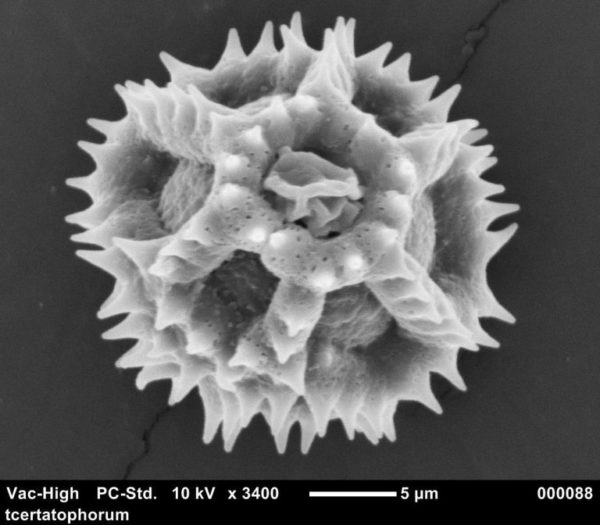Researchers discover wildflower’s spiny pollen adapts to help plants reproduce.
Have pollen. Must travel.
Over 80% of the world’s flowering plants must reproduce in order to produce new flowers, according to the U.S. Forest Service. This process involves the transfer of pollen between plants by wind, water or insects called pollinators — including bumblebees.
In a new study, researchers at the University of Missouri discovered spiny pollen — from a native wild dandelion species in the southern Rocky Mountains — has evolved to attach to traveling bumblebees. Using a highly detailed electron scanning microscope, the research team could observe the microscopic surface of the spiny pollen, which otherwise looks like yellow dust to the naked eye.

“We observed this native pollen from the Rockies has optimally spaced spines that allow it to easily attach to a pollinator, such as a bumblebee,” said Austin Lynn, a recent graduate with a doctorate in biology from the Division of Biological Sciences in the College of Arts and Science. “When we compared that with the average lawn dandelion, which does not need pollen to reproduce, we saw that the pollen on the lawn dandelion has a shorter distance between these spines, making it harder to attach to traveling pollinators. Therefore, we show this wild dandelion pollen has evolved over many generations to create an optimal shape for attaching to pollinators.”
Previous studies have examined spiny pollen, but this is one of the first studies focusing on the pollen’s spines. Lynn, the lead researcher on the study, said the researchers were also able to refute a competing idea that spiny pollen serves as a defensive mechanism to protect the pollen from being eaten.
“The spiny pollen actually acts like Velcro,” Lynn said. “So, when bees are harvesting pollen for food, this pollen is sticking to their hair. It’s a great example of mutualism where the plant needs the pollinator to reproduce and the pollinator needs the plant for its food.”
The researchers plan to study how a bumblebee’s hairs contribute to this process.
Read the paper: American Journal of Botany
Article source: University of Missouri
Author: Eric Stann
Cover image credit: Capri23auto / Pixabay






